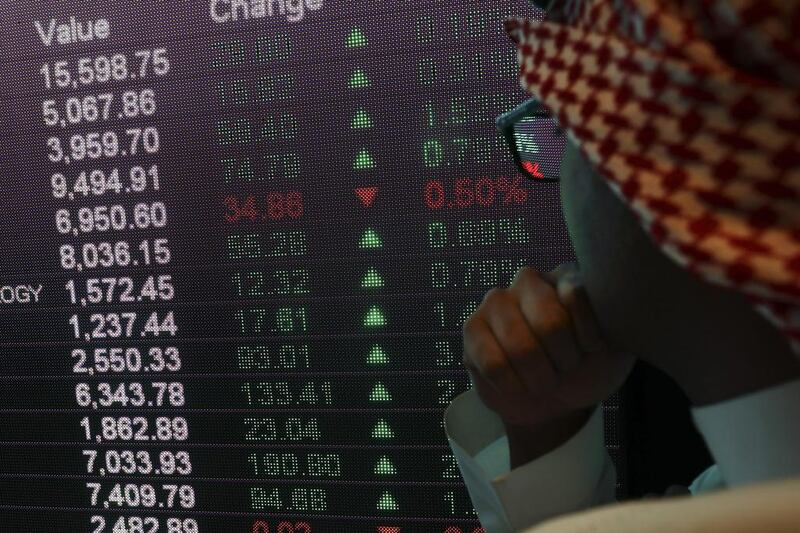Total new GCC debt issuance in 2018 is forecast to drop by more than 10 per cent to $80 billion, thanks to higher oil prices and fiscal consolidation measures, according to fund manager Franklin Templeton Investments.
The majority of issuances will be sovereign, including an expected multi-tranche dollar bond from Saudi Arabia, said Mohieddine Kronfol, chief investment officer of global sukuk and Mena fixed income at Franklin Templeton.
Last year's issuances averaged $90bn.
“We’re expecting it [GCC bond issuance] to be quite close [to 2017] but slightly lower, based on the fact that our oil price assumptions are elevated to $70 to $75 per barrel so we think deficits will be slightly lower, therefore funding needs will be slightly lower,” he said on Tuesday.
“Right now we’re on pace to issue a little bit more, but by the time the year comes to an end we’ll probably be around the $80bn mark." The $80bn figure includes sukuk and conventional sovereign and corporate issues.
Saudi Arabia, the world's biggest oil exporter, was expected to reveal on Tuesday initial price guidance for a planned multi-tranche dollar bond, the latest issuance since Saudi Arabia’s $17.5bn bond sale in 2016, which established the kingdom as one of the biggest emerging market debt issuers, news agencies reported.
Documents from one of the banks leading on the deal showed that the kingdom plans to issue seven-year, 12-year and 31-year notes, all of benchmark size, which typically means upwards of $500 million, the news agencies said.
Franklin expects the size of the issuance to be around $4bn and the deal could elicit significant interest from investors, Mr Kronfol said.
Arabian Gulf governments are issuing debt to plug fiscal shortfalls caused by the three-year oil slump since 2014. But as oil prices hover around $70 a barrel, their need to finance the shortfall through debt issuances has diminished.
Besides sovereign sales, corporate issuances are rising and account for $204bn of the total $320bn of outstanding GCC debt, Franklin said.
_____________
Read more:
[ Mobius remain bullish on emerging markets equities as he heads into retirement ]
[ Saudi Arabia re-taps 10bn riyal October domestic sukuk issue ]
[ Veteran investor Mark Mobius to retire after three decades at Franklin Templeton ]
_____________
Overall, the region is increasingly attractive for bond investors as governments implement fiscal reforms and debt levels become more sustainable.
“The worst is over,” Mr Kronfol said. GCC budget deficits have shrunk by 43 per cent since 2016 and further consolidation is expected in 2018 and 2019, albeit at a slower pace.
“We’re in a pretty comfortable position from a debt sustainability point of view,” he said. Collectively, the GCC has reserves above 200 per cent of GDP, while the debt to GDP level sits at around 25 per cent.
“Debt is still modest relative to emerging and developed markets, and assets have been drawn down but are still generous for the sovereign investor,” he said.
Despite this, investors are typically “underweight” GCC debt and need to make a conscious decision to increase their allocation, Mr Kronfol said.
“What goes frequently unrecognised is that the region has been delivering some really strong risk-adjusted returns,” he said.
“GCC debt has performed even better during stressful scenarios, which is counterintuitive because people tend to think the GCC is a very volatile region due to fluctuating oil prices and geopolitics. Investors incorrectly think adding GCC debt increases, rather than reduces, portfolio risk.”
The most significant events in the GCC capital markets are Saudi Arabia’s inclusion in the MCSI Emerging Markets index expected next June, and the planned listing of its state oil company Saudi Aramco.
Aramco will account for 2.5 per cent of the index after its inclusion, which is expected to generate $50bn of capital inflows, Franklin says.
However, if Aramco lists, the figures could rise to 5 per cent and $200bn respectively – a huge boost to capital inflows. The fund manager advocates a dual listing on local and international exchanges “to deepen liquidity and improve the governance structure”.






